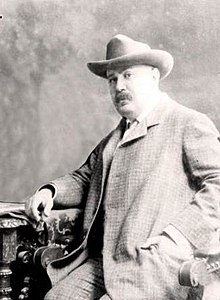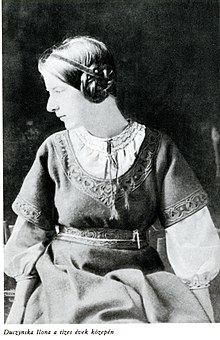
The Galileo Circle (Galilei Kör) was an atheist-materialist student organization that functioned in Budapest between 1908 and 1919. Their center was located at the Anker Köz in Terézváros, Budapest.[1] The circle had several subgroups with four different world views: the radical liberals (they called themselves as "radical democrats"), the Marxists (they called it as "Revolutionary Socialists"), the anarcho-syndicalists and the socialists (social democrats). However they had common goals, which included the protection of free scientific research and thinking at universities, the cultivation of social sciences, the social assistance of poor students, the spread of anti-clericalist and atheist views, the support of anti-nationalism and promoting internationalism, the propagation of anti-alcoholism, the opposition to large estates and the "reorientation of Hungarian social perception".





The circle was founded on November 22, 1908.[3] This was in response to the attacks on Gyula Pikler, a social scientist who had suggested that the nation was a social phenomenon which arose through a social and historical process, rather than an eternal entity. This led to him being attacked by Hungarian Christian nationalists.[3] It claimed to be specifically apolitical and declared itself in favour of self-education and science. Endre Ady described the galilesists as the 'young army of Fever', dedicating various poems to the Circle. Oszkár Jászi thought the galileists would help lead Hungary from 'the Balkans into Western Europe'.[1]
The organisation was banned in January, 1918, a period of labour unrest in the Austro-Hungarian Empire. However following the Aster Revolution in October 1918 it was relaunched. It was finally dissolved on 21 March, shortly following the establishment of the Hungarian Soviet Republic.[1]
The circle published Szabadgondolat.[4] The Sonntagskreis was a senior sister organization of Galileo Circle, but its membership required at least a finished university degree. However the Sonntagskreis preferred rather the membership of scholars.
In the interwar period, following the dissolution of the Circle, Hungarian conservative intellectuals criticised the Galileists for having instigated the Aster Revolution, their contribution in the disarmament of the Hungarian army when other nations started to claim large territories from Hungary, their activity led to the tragic events of the Hungarian Soviet Republic and for being responsible for the decisions of the Treaty of Trianon, which resulted in the loss of 70% of the pre-war territory of Hungary and 64% of the pre-WW1 era population.[5]
- ^ a b c Csunderlik, Péter Tibor. "The history and reception history of the Galilei Circle (1908-1919)" (PDF). elte.hu. ELTE Faculty of Humanities. Retrieved 2018-11-28.
- ^ The first assassination attempt against István Tisza, nepszava.hu
- ^ a b Csunderlik, Péter Tibor (21 November 2013). ""Titkos társulat zsoldján kitartott bárgyú eszmezavarosok"? - 105 éve alakult a Galilei Kör" ["Idiotic lunatics on the payroll of a secret society"? - 105 years since the Galileo Circle was founded]. Múlt-kor történelmi magazin (in Hungarian). Archived from the original on 2022-03-24. Retrieved 2018-11-28.
- ^ Csunderlik, Péter Tibor. "Death instead of life – Activities of the Galilei Circle in the first two years of the world war | Frontlines and Hinterland". elsovh.hu. Archived from the original on 2019-07-30. Retrieved 2018-11-28.
- ^ Az ország kiszabadítására törekedtek, de elbuktak – A Galilei Kör története, 168ora.hu